Creativity is on the decline, and that’s not just our opinion; it’s backed by research*. But we’re not here to dwell on the negative. Instead, let’s talk about how we can turn this trend around and get those creative juices flowing once again.
Many employees feel like they’re juggling more tasks than ever before
One of the biggest culprits of this creativity crisis is our fast-paced, over-scheduled lives. With so many tasks and responsibilities, it’s no wonder that we’re struggling to find time to tap into our imagination. And let’s not forget about the isolation of remote work. Without the social interaction and inspiring environments that we’re used to, it’s easy to feel uninspired and unmotivated.
But fear not, because there’s a solution that may surprise you: artificial intelligence (AI). Yes, you heard that right. We’re not talking about the sci-fi kind of AI that’s here to take over the world; we’re talking about the kind of AI that can actually help us boost our creativity.
Create new and exciting visuals faster than ever before
Innovative AI art and picture tools are being embraced by designers to spark ideas and generate original imagery in record time. Think of it as having your own personal creative assistant that can read your mind and bring your vision to life with just a few clicks. It’s like having a secret weapon that can help you break through creative blocks and create stunning designs at lighting speed.
So, let’s challenge the traditional way of thinking and embrace the idea that AI and technology can actually help us unleash our creativity. In this blog article, we feature 10 AI Art and Picture tools and explore how they can help us tap into our imagination, create unique designs, and ultimately become more productive and successful in our work.
10 AI technology tools for empowering creativity:
1. DALL·E 2
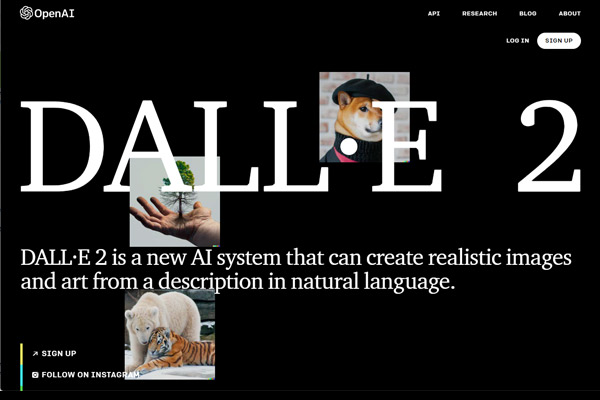
DALL-E 2 is an OpenAI tool that turns even the most basic text-based descriptions and prompts into unique pieces of art. It’s the big brother of DALL-E, and produces images with 4x greater resolution than the 2021 original.
It works by using the GPT-3 language processing model, analysing textual input, and matching this text to existing word/image pairs.
One of the standout features of DALL-E 2 is its ability to infer contextual details not mentioned in the prompt, resulting in greater realism.
2. Playground AI
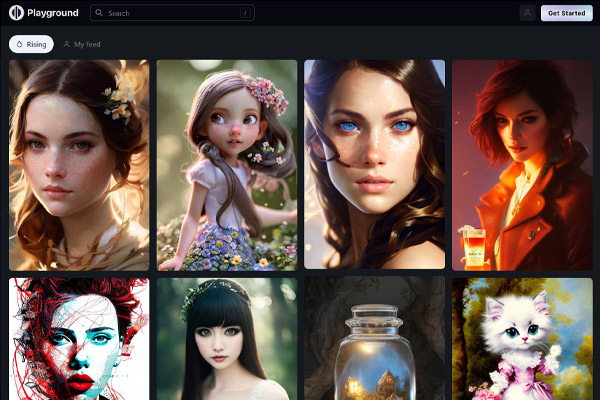
Playground AI is a free-to-use platform that almost instantly generates AI-produced images from text-based prompts.
The platform is feature-rich, with options to add filters – everything from cinematic to pop art – upload your own drawings, tweak dimensions, and adjust prompt sensitivity.
There’s even a text-based editing option, so you can add, remove, or change the generated image easily. The free version offers 1000 images per day, with options to upgrade to paid packages.
3. NightCafe
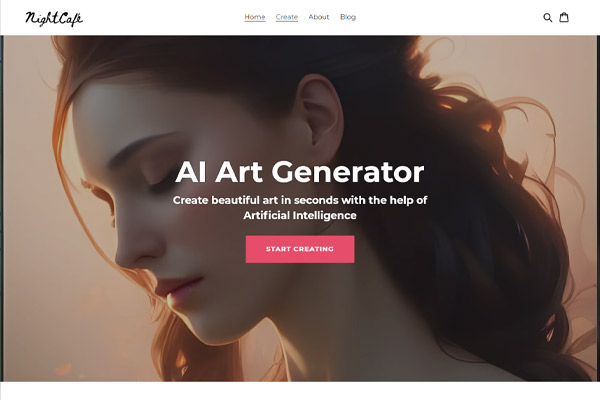
NightCafe is a digital tool that allows anyone to create one-of-a-kind, personalised works of art. It’s powered by two different machine learning algorithms – VQGAN and CLIP – which translate text into images.
The interface itself is very similar to Playground AI, but with a larger selection of styles to choose from, including CGI characters, and even a ‘candyland’ design.
NightCafe allows you to choose the algorithm you want to use, giving more control than you get with other tools.
4. Midjourney
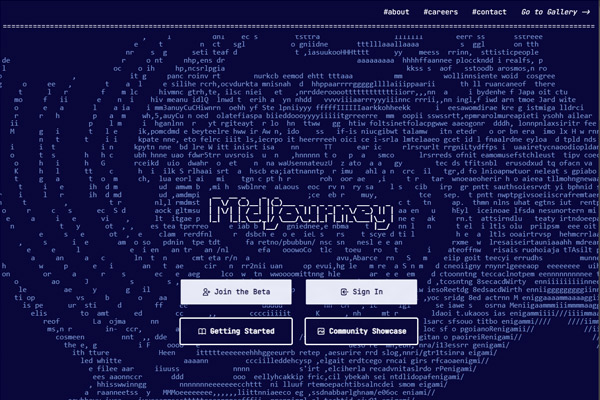
Midjourney is an interesting tool developed by researchers studying human imagination. Because of this, it’s quite different from the tools striving to generate hyper-realistic AI images.
Instead, it’s rooted in fantasy and fiction, producing painting and drawing-type artwork rather than photo-style prints.
To use Midjourney, you’ll need to download and install Discord; a communications app. There can be a bit of a learning curve if you’re new to Discord, but it’s easy when you’ve got the hang of it.
5. Mage

Mage is an online AI image generator powered by the Stable Diffusion model, which is #6 on our list.
The biggest advantage here is simplicity. All you have to do is give it a text-based prompt, and hit enter. That’s it. Everything else – all the fine-tuning – can be done in the editing stage. So while it may not be quite as precise as other tools, it’s probably one of the best out there for idea generation.
The basic plan is free and, perhaps best of all, you don’t need to sign up for an account to try it out.
6. Stable Diffusion
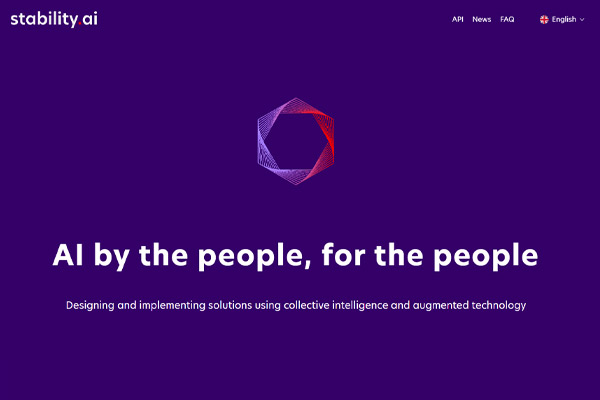
Stable Diffusion is a text-to-image model that’s used to power a number of AI image generators, including Mage and NightCafe. Of course, it also powers its own Stable Diffusion tool.
Like Mage, simplicity is the name of the game here. There are just two fields available: ‘prompt’ and ‘negative prompt’. One great thing about Stable Diffusion is its prompt library.
This is a collection of searchable prompts to give you inspiration when you’re not sure how to get started, or how to ‘talk’ to the AI system.
7. Piggy
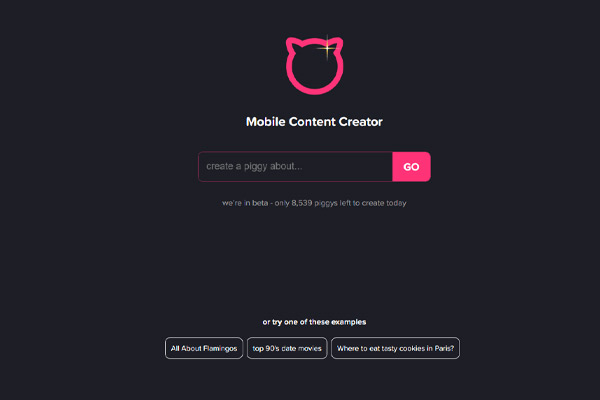
Piggy is a quick and simple tool that uses the power of AI to generate interactive mobile content, without needing any creativity, or any coding skills.
The possibilities are (almost) endless. There are options to create images, videos, gifs, polls, quizzes, presentations, and more, all based on a single text-based prompt.
Piggy is undoubtedly one of the best options for beginners, or for generating ideas across a broad spectrum. However, it’s not quite as in-depth as some other tools mentioned here.
8. Pixelhunter
![]()
Pixelhunter is a tool that can help boost creativity once you already have an image in mind. It uses an intelligent API to creatively crop, adjust, and resize images to ensure they’ll have the biggest impact on the intended channel.
The tool supports more than 100 different sizes. These are optimised for Facebook, Instagram, Twitter, YouTube, TikTok, Open Graph, and more.
The drag-and-drop interface is super simple for beginners, making this one of the easiest AI image resizers on the market today.
9. Civitai
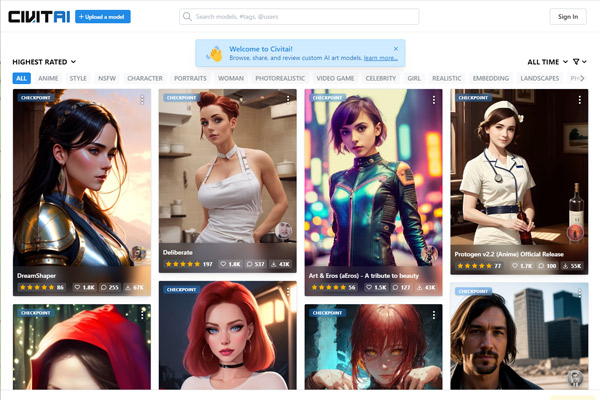
Civitai is a platform where individuals can upload and share their own machine-learning algorithms that have been trained to generate AI images and artwork.
Every model is different, depending on the data that’s been used to train it. This means each model should produce different images for any given prompt.
From the Civitai library, you can download and try out a variety of models, finding those which work best for your needs. Don’t forget to leave a review of any models you test.
10. Pixela.ai
![]()
Pixela.ai is a niche online library of AI-generated game textures. Every texture housed within the library has been created using the Stable Diffusion algorithm, and can be downloaded by designers struggling with game development.
There are literally hundreds of them, ranging from ancient dungeon floors adorned with runes to grassy fields, lava beds, and lifelike cityscapes.
Unsure where to get started? The ‘random textures’ button will generate a selection of random files to discover.
Now, gaps in creative thinking can be bridged through the use of artificial intelligence
In conclusion, AI art and picture tools are not here to replace creativity, but to empower it. By embracing these cutting-edge tools, we can break through creative blocks and unleash our imagination, creating stunning designs in record time.
So let’s challenge the norm and embrace the power of technology to boost our creativity and achieve our goals.
With AI by our side, the possibilities are endless…
*Research = https://www.inc.com/jessica-stillman/creativity-crisis-torrance-test.html


